HIV-serodifferent couples' perspectives and practices regarding HIV prevention strategies: A mixed methods study
- PMID: 36962775
- PMCID: PMC10022221
- DOI: 10.1371/journal.pgph.0000620
HIV-serodifferent couples' perspectives and practices regarding HIV prevention strategies: A mixed methods study
Abstract
A substantial proportion of heterosexually acquired HIV infections in the U.S. occur between partners in primary relationships characterized by mixed HIV status. The U.S. Centers for Disease Control and Prevention have issued guidelines prioritizing HIV-serodifferent couples for primary HIV prevention, including treatment-as-prevention and pre-exposure prophylaxis (PrEP). Yet, very little research has been conducted to understand the perspectives and practices of HIV-serodifferent couples regarding HIV prevention strategies in the U.S. To help fill this gap, we conducted a mixed methods study with 27 mostly Black/African American and Latinx HIV-serodifferent heterosexual couples residing in New York City to explore their knowledge, attitudes, practices, and perspectives regarding combination HIV prevention, including condoms, PrEP and viral control. All couples expressed the desire to maintain viral suppression in the HIV-positive partner, which was not always achieved. There was considerable heterogeneity in the use of HIV prevention methods by couples; and several patterns emerged that were largely driven by gender and relationship dynamics. Female partners, in particular, expressed high levels of anxiety around transmission of HIV and thus desired multiple methods of protection. Healthcare providers should consider couples' psychosocial well-being, relationship quality, and other motivational factors when helping to tailor HIV preventative care for mixed-status couples.
Copyright: © 2022 McMahon et al. This is an open access article distributed under the terms of the Creative Commons Attribution License, which permits unrestricted use, distribution, and reproduction in any medium, provided the original author and source are credited.
Conflict of interest statement
The authors have declared that no competing interests exist.
Figures
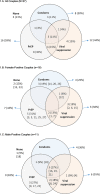

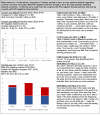
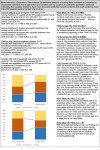
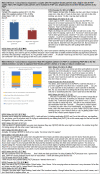
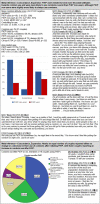
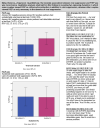
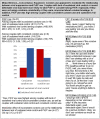
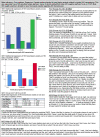
Similar articles
-
The Magnetic Couples Study: protocol for a mixed methods prospective cohort study of HIV-serodifferent heterosexual couples' perspectives and use of pre-exposure prophylaxis (PrEP).BMJ Open. 2021 Jul 1;11(7):e048993. doi: 10.1136/bmjopen-2021-048993. BMJ Open. 2021. PMID: 34210734 Free PMC article.
-
Risk of HIV transmission through condomless sex in serodifferent gay couples with the HIV-positive partner taking suppressive antiretroviral therapy (PARTNER): final results of a multicentre, prospective, observational study.Lancet. 2019 Jun 15;393(10189):2428-2438. doi: 10.1016/S0140-6736(19)30418-0. Epub 2019 May 2. Lancet. 2019. PMID: 31056293 Free PMC article.
-
HIV-negative male couples' attitudes about pre-exposure prophylaxis (PrEP) and using PrEP with a sexual agreement.AIDS Care. 2016 Aug;28(8):994-9. doi: 10.1080/09540121.2016.1168911. Epub 2016 Apr 7. AIDS Care. 2016. PMID: 27055001 Free PMC article.
-
Condomless sex and HIV transmission among serodifferent couples: current evidence and recommendations.Ann Med. 2017 Sep;49(6):534-544. doi: 10.1080/07853890.2017.1320423. Epub 2017 May 3. Ann Med. 2017. PMID: 28409656 Review.
-
[HIV prevention among serodifferent couples: postures and difficulties in Lomé (Togo)].Sante Publique. 2023;35(1):87-97. doi: 10.3917/spub.231.0087. Sante Publique. 2023. PMID: 37328420 Review. French.
Cited by
-
Behavioral Modeling and its Association with PrEP and ART Use in Ugandan HIV-Serodifferent Couples.AIDS Behav. 2024 May;28(5):1719-1730. doi: 10.1007/s10461-024-04286-2. Epub 2024 Feb 16. AIDS Behav. 2024. PMID: 38361169 Free PMC article. Clinical Trial.
-
PrEP in the key population community: a qualitative study of perspectives on pre-exposure prophylaxis by men who have sex with men and female sex workers in Kigali, Rwanda.medRxiv [Preprint]. 2024 Aug 20:2024.08.20.24311545. doi: 10.1101/2024.08.20.24311545. medRxiv. 2024. Update in: PLOS Glob Public Health. 2025 Apr 24;5(4):e0004538. doi: 10.1371/journal.pgph.0004538. PMID: 39228702 Free PMC article. Updated. Preprint.
-
Attitudes Toward the Uptake of Combination HIV Prevention Methods Among Young Black and Latino Heterosexual Couples Living in New York City: A Qualitative Study.J Assoc Nurses AIDS Care. 2024 May-Jun 01;35(3):281-293. doi: 10.1097/JNC.0000000000000464. Epub 2024 Mar 28. J Assoc Nurses AIDS Care. 2024. PMID: 38546533 Free PMC article.
-
PrEP in the key population community: A qualitative study of perspectives on pre-exposure prophylaxis by gay, bisexual and other men who have sex with men and female sex workers in Kigali, Rwanda.PLOS Glob Public Health. 2025 Apr 24;5(4):e0004538. doi: 10.1371/journal.pgph.0004538. eCollection 2025. PLOS Glob Public Health. 2025. PMID: 40273073 Free PMC article.
References
-
- Patel RC, Leddy AM, Odoyo J, Anand K, Stanford-Moore G, Wakhungu I, et al.. What motivates serodiscordant couples to prevent HIV transmission within their relationships: findings from a PrEP implementation study in Kenya. Cult Health Sex. 2018;20(6):625–39. Epub 2017/09/15. doi: 10.1080/13691058.2017.1367421 ; PubMed Central PMCID: PMC5851810. - DOI - PMC - PubMed
-
- Dunkle KL, Stephenson R, Karita E, Chomba E, Kayitenkore K, Vwalika C, et al.. New heterosexually transmitted HIV infections in married or cohabiting couples in urban Zambia and Rwanda: an analysis of survey and clinical data. The Lancet. 2008;371(9631):2183–91. doi: 10.1016/S0140-6736(08)60953-8 - DOI - PubMed
Grants and funding
LinkOut - more resources
Full Text Sources
Miscellaneous
